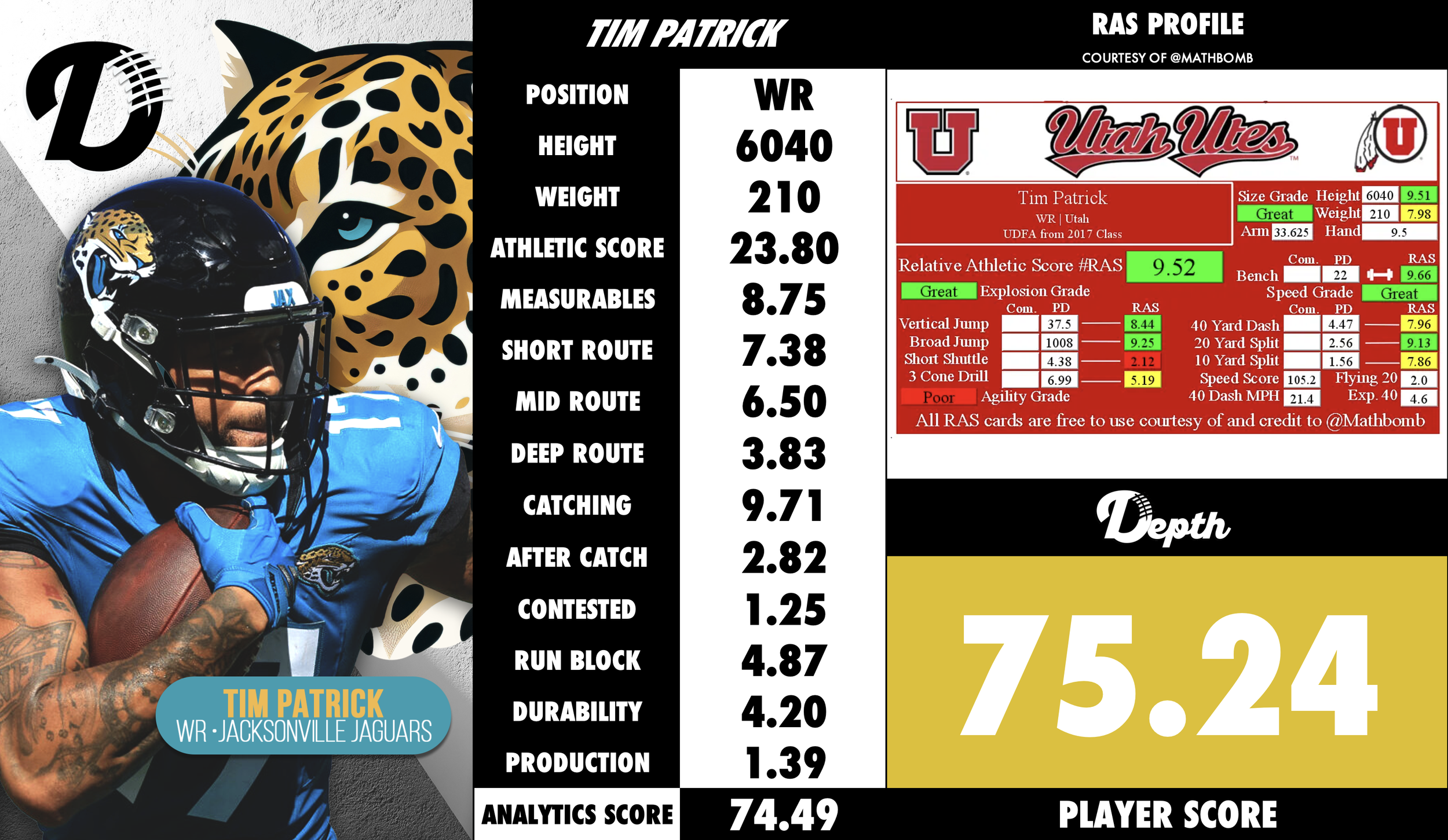
Tim Patrick
Summary
Tim Patrick went undrafted in the 2017 Class out of University of Utah. Patrick brings a rare physical profile for a receiver (size + hands + contested catch ability) and has proven himself as a legitimate NFL starter in his healthier years. His major strengths are his catch radius, reliability, and ability to win in traffic or in contested situations. His key constraints are the injury history, limited elite deep‑speed separation, and the challenge of maintaining high volume in competitive WR rooms. If he remains healthy and receives consistent reps, he remains a valuable veteran receiver with starter upside.
Strengths
Imposing size + catch radius + contested‑catch ability: Patrick uses his 6′4″ frame to his advantage — he excels at “boxing out” defensive backs and high‑pointing the ball in the air. One evaluation noted: “uses his size to his advantage, boxing out corners and high‑pointing passes.” SI
Reliable hands + possession‑receiver traits: He’s widely viewed as having dependable hands, especially in medium/short routes (slants, curls, back‑shoulder). From the same evaluation: “he simply doesn’t drop passes … slants, curls, fades, and back‑shoulder routes? Check, Check, Check, Check.” SI
Versatility in route tree + soft spots in zone: Film‐reviewers cite that he finds soft zones, shows awareness of coverage, and can work underneath and behind linebackers in zone schemes. Detroit Football
Resilience & character: His path to the NFL (walk‑on, undrafted, battled injuries) and his effort to stick and improve have been noted as positive traits. Denver Broncos
Weaknesses / Areas for Improvement
Injury history & durability concerns: Patrick has suffered major injuries: a torn ACL in 2022 and an Achilles in 2023. These have significantly impacted his availability and may limit his athletic ceiling.
Not a burner / limited deep‑threat explosiveness: While his size helps in contested catches, he is not regarded as one of the fastest receivers in the league. Evaluators note his separation on deeper routes is more effort‐based than raw speed‐based. SI
Role/volume limitations in crowded WR rooms: In recent seasons (especially post‑injury) his role has become more limited. Per reports: “Doesn’t have much fantasy utility in his current role as a depth receiver.” NFL Fantasy
Blocking / perimeter effectiveness variable: Some evaluations point out that while he is a capable blocker (especially for a receiver his size), consistency isn’t always elite and blocking finesse is secondary relative to his receiving primary skill set.
Fit & Outlook
Patrick is best suited as a boundary “X” receiver or large slot/tri‑flex option in systems that value size, contested‑catch ability and positional versatility. He fits well in offenses needing a reliable veteran target who can hold up in traffic and win jumps rather than purely separate via elite speed. If he can stay healthy and regain form post‐injury, his outlook is as a strong WR2 or complementary starter — someone who can reliably produce 500‑800 yards with 5‑8 touchdowns given appropriate volume. If injuries continue to hamper him or role shrinks further, his ceiling may settle as a dependable depth receiver.


